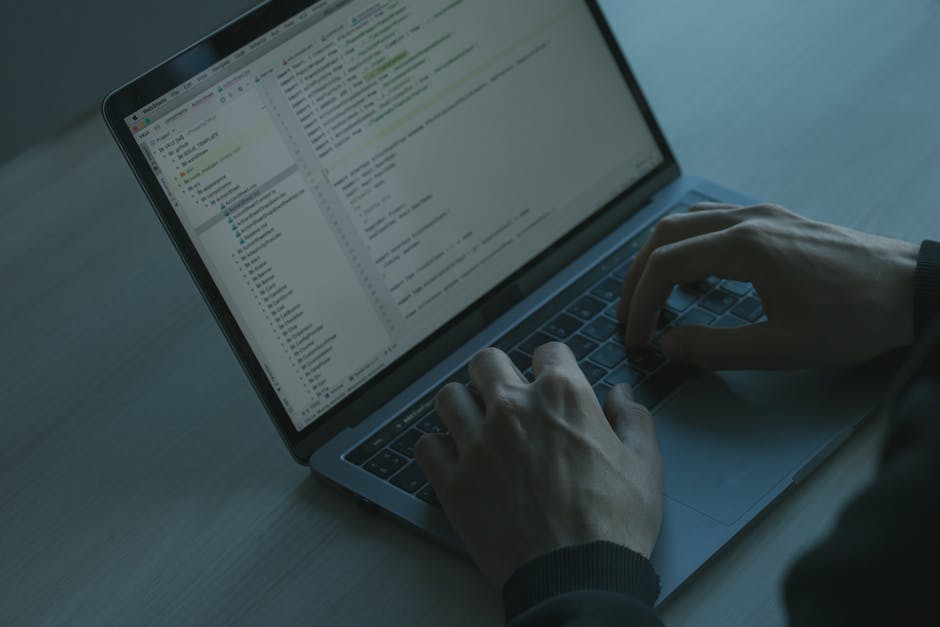Unpatched PHP Voyager Flaws Leave Servers Open to One-Click RCE Exploits - Related to rce, patch, kernel, exploited, zero-day
Google fixes Android kernel zero-day exploited in attacks

The February 2025 Android security updates patch 48 vulnerabilities, including a zero-day kernel vulnerability that has been exploited in the wild.
This high-severity zero-day (tracked as CVE-2024-53104) is a privilege escalation security flaw in the Android Kernel's USB Video Class driver that allows authenticated local threat actors to elevate privileges in low-complexity attacks.
The issue occurs because the driver does not accurately parse frames of the type UVC_VS_UNDEFINED within the uvc_parse_format function. As a result, the frame buffer size is miscalculated, leading to potential out-of-bounds writes that can be exploited in arbitrary code execution or denial-of-service attacks.
In addition to this actively exploited zero-day bug, the February 2025 Android security updates also fix a critical security flaw in Qualcomm's WLAN component.
Qualcomm describes this critical flaw (CVE-2024-45569) as a firmware memory corruption issue caused by an Improper Validation of Array Index weakness in WLAN host communication when parsing the ML IE due to invalid frame content.
CVE-2024-45569 can be exploited by remote attackers to potentially execute arbitrary code or commands, read or modify memory, and trigger crashes in low-complexity attacks that don't require privileges or user interaction.
Google released two sets of patches for February 2025, the 2025-02-01 and 2025-02-05 security patch levels. The latter includes all fixes from the first batch and additional patches for closed-source third-party and kernel elements, which may not apply to all Android devices.
Vendors may prioritize the earlier patch set for quicker updates, which does not necessarily indicate increased exploitation risk.
Google Pixel devices will receive updates immediately, while other manufacturers often take longer to test and fine-tune the security patches for various hardware configurations.
In November, Google fixed two more actively exploited Android zero-days (CVE-2024-43047 and CVE-2024-43093), also tagged as exploited in limited, targeted attacks.
CVE-2024-43047 was first marked as actively exploited by Google Project Zero in October 2024. The Serbian government also exploited it in NoviSpy spyware attacks to compromise the Android devices of activists, journalists, and protestors.
Fake travel reservations are exacting more pain from the travel weary, already dealing with the mise...
A Russian-speaking cybercrime gang known as Crazy Evil has been linked to over 10 active social medi...
The North Korean threat actors behind the Contagious Interview campaign have been observed deliverin...
Netgear warns users to patch critical WiFi router vulnerabilities

Netgear has fixed two critical vulnerabilities affecting multiple WiFi router models and urged end-individuals to modification their devices to the latest firmware as soon as possible.
The security flaws impact multiple WiFi 6 access points (WAX206, WAX214v2, and WAX220) and Nighthawk Pro Gaming router models (XR1000, XR1000v2, XR500).
Although the American computer networking organization did not disclose more details about the two bugs, it did reveal that unauthenticated threat actors can exploit them for remote code execution (tracked internally as PSV-2023-0039) and authentication bypass (PSV-2021-0117) in low-complexity attacks that don't require user interaction.
"NETGEAR strongly recommends that you download the latest firmware as soon as possible," the firm noted in security advisories .
The table below lists all vulnerable router models and the firmware versions with security patches.
Vulnerable Netgear router Patched firmware version XR1000 Firmware version [website] XR1000v2 Firmware version [website] XR500 Firmware version [website] WAX206 Firmware version [website] WAX220 Firmware version [website] WAX214v2 Firmware version [website].
To download and install the latest firmware for your Netgear router, you have to go through the following steps:
"The unauthenticated RCE vulnerability remains if you do not complete all recommended steps," the corporation warned on Saturday.
"NETGEAR is not responsible for any consequences that could have been avoided by following the recommendations in this notification."
A Netgear spokesperson was not available for comment when contacted by BleepingComputer for more information on the two security flaws.
In July, Netgear also urged end-clients to upgrade to the latest firmware immediately to patch stored cross-site scripting (XSS) and authentication bypass vulnerabilities impacting several WiFi 6 router models.
One month earlier, security researchers disclosed six flaws of varying severity levels in Netgear WNR614 N300, an end-of-life router popular among home people and small businesses.
Microsoft today unleashed updates to plug a whopping 161 security vulnerabilities in Windows and rel...
Brazilian Windows clients are the target of a campaign that delivers a banking malware known as Coyote...
The Open Web Application Security Project has lately introduced a new Top 10 project - the Non-Hum...
Unpatched PHP Voyager Flaws Leave Servers Open to One-Click RCE Exploits

The identified issues, which remain unpatched to date despite responsible disclosure on September 11, 2024, are listed below -.
CVE-2024-55417 - An arbitrary file write vulnerability in the "/admin/media/upload" endpoint.
CVE-2024-55416 - A reflected cross-site scripting (XSS) vulnerability in the "/admin/compass" endpoint.
CVE-2024-55415 - An arbitrary file leak and deletion vulnerability.
A malicious attacker could leverage Voyager's media upload feature to upload a malicious file in a manner that bypasses MIME type verification, and make use of a polyglot file that appears as an image or video but contains executable PHP code to trick the server into processing it as a PHP script, thereby resulting in remote code execution.
CVE-2024-55415, on the other hand, concerns a flaw in the file management system that enables threat actors to wipe arbitrary files from the system, or exploit it in conjunction with the XSS vulnerability to extract the contents of the files.
In the absence of a fix, individuals are advised to exercise caution when using the project in their applications.
The FBI and authorities in The Netherlands this week seized dozens of servers and domains for a hugely popular spam and malware dissemination service ......
Over 57 distinct threat actors with ties to China, Iran, North Korea, and Russia have been observed using artificial intelligence (AI) technology powe......
Mizuno USA, a subsidiary of Mizuno Corporation, one of the world's largest sporting goods manufacturers, confirmed in data breach notification letter......
Market Impact Analysis
Market Growth Trend
| 2018 | 2019 | 2020 | 2021 | 2022 | 2023 | 2024 |
|---|---|---|---|---|---|---|
| 8.7% | 10.5% | 11.0% | 12.2% | 12.9% | 13.3% | 13.4% |
Quarterly Growth Rate
| Q1 2024 | Q2 2024 | Q3 2024 | Q4 2024 |
|---|---|---|---|
| 12.5% | 12.9% | 13.2% | 13.4% |
Market Segments and Growth Drivers
| Segment | Market Share | Growth Rate |
|---|---|---|
| Network Security | 26% | 10.8% |
| Cloud Security | 23% | 17.6% |
| Identity Management | 19% | 15.3% |
| Endpoint Security | 17% | 13.9% |
| Other Security Solutions | 15% | 12.4% |
Technology Maturity Curve
Different technologies within the ecosystem are at varying stages of maturity:
Competitive Landscape Analysis
| Company | Market Share |
|---|---|
| Palo Alto Networks | 14.2% |
| Cisco Security | 12.8% |
| Crowdstrike | 9.3% |
| Fortinet | 7.6% |
| Microsoft Security | 7.1% |
Future Outlook and Predictions
The Google Fixes Android landscape is evolving rapidly, driven by technological advancements, changing threat vectors, and shifting business requirements. Based on current trends and expert analyses, we can anticipate several significant developments across different time horizons:
Year-by-Year Technology Evolution
Based on current trajectory and expert analyses, we can project the following development timeline:
Technology Maturity Curve
Different technologies within the ecosystem are at varying stages of maturity, influencing adoption timelines and investment priorities:
Innovation Trigger
- Generative AI for specialized domains
- Blockchain for supply chain verification
Peak of Inflated Expectations
- Digital twins for business processes
- Quantum-resistant cryptography
Trough of Disillusionment
- Consumer AR/VR applications
- General-purpose blockchain
Slope of Enlightenment
- AI-driven analytics
- Edge computing
Plateau of Productivity
- Cloud infrastructure
- Mobile applications
Technology Evolution Timeline
- Technology adoption accelerating across industries
- digital transformation initiatives becoming mainstream
- Significant transformation of business processes through advanced technologies
- new digital business models emerging
- Fundamental shifts in how technology integrates with business and society
- emergence of new technology paradigms
Expert Perspectives
Leading experts in the cyber security sector provide diverse perspectives on how the landscape will evolve over the coming years:
"Technology transformation will continue to accelerate, creating both challenges and opportunities."
— Industry Expert
"Organizations must balance innovation with practical implementation to achieve meaningful results."
— Technology Analyst
"The most successful adopters will focus on business outcomes rather than technology for its own sake."
— Research Director
Areas of Expert Consensus
- Acceleration of Innovation: The pace of technological evolution will continue to increase
- Practical Integration: Focus will shift from proof-of-concept to operational deployment
- Human-Technology Partnership: Most effective implementations will optimize human-machine collaboration
- Regulatory Influence: Regulatory frameworks will increasingly shape technology development
Short-Term Outlook (1-2 Years)
In the immediate future, organizations will focus on implementing and optimizing currently available technologies to address pressing cyber security challenges:
- Technology adoption accelerating across industries
- digital transformation initiatives becoming mainstream
These developments will be characterized by incremental improvements to existing frameworks rather than revolutionary changes, with emphasis on practical deployment and measurable outcomes.
Mid-Term Outlook (3-5 Years)
As technologies mature and organizations adapt, more substantial transformations will emerge in how security is approached and implemented:
- Significant transformation of business processes through advanced technologies
- new digital business models emerging
This period will see significant changes in security architecture and operational models, with increasing automation and integration between previously siloed security functions. Organizations will shift from reactive to proactive security postures.
Long-Term Outlook (5+ Years)
Looking further ahead, more fundamental shifts will reshape how cybersecurity is conceptualized and implemented across digital ecosystems:
- Fundamental shifts in how technology integrates with business and society
- emergence of new technology paradigms
These long-term developments will likely require significant technical breakthroughs, new regulatory frameworks, and evolution in how organizations approach security as a fundamental business function rather than a technical discipline.
Key Risk Factors and Uncertainties
Several critical factors could significantly impact the trajectory of cyber security evolution:
Organizations should monitor these factors closely and develop contingency strategies to mitigate potential negative impacts on technology implementation timelines.
Alternative Future Scenarios
The evolution of technology can follow different paths depending on various factors including regulatory developments, investment trends, technological breakthroughs, and market adoption. We analyze three potential scenarios:
Optimistic Scenario
Rapid adoption of advanced technologies with significant business impact
Key Drivers: Supportive regulatory environment, significant research breakthroughs, strong market incentives, and rapid user adoption.
Probability: 25-30%
Base Case Scenario
Measured implementation with incremental improvements
Key Drivers: Balanced regulatory approach, steady technological progress, and selective implementation based on clear ROI.
Probability: 50-60%
Conservative Scenario
Technical and organizational barriers limiting effective adoption
Key Drivers: Restrictive regulations, technical limitations, implementation challenges, and risk-averse organizational cultures.
Probability: 15-20%
Scenario Comparison Matrix
| Factor | Optimistic | Base Case | Conservative |
|---|---|---|---|
| Implementation Timeline | Accelerated | Steady | Delayed |
| Market Adoption | Widespread | Selective | Limited |
| Technology Evolution | Rapid | Progressive | Incremental |
| Regulatory Environment | Supportive | Balanced | Restrictive |
| Business Impact | Transformative | Significant | Modest |
Transformational Impact
Technology becoming increasingly embedded in all aspects of business operations. This evolution will necessitate significant changes in organizational structures, talent development, and strategic planning processes.
The convergence of multiple technological trends—including artificial intelligence, quantum computing, and ubiquitous connectivity—will create both unprecedented security challenges and innovative defensive capabilities.
Implementation Challenges
Technical complexity and organizational readiness remain key challenges. Organizations will need to develop comprehensive change management strategies to successfully navigate these transitions.
Regulatory uncertainty, particularly around emerging technologies like AI in security applications, will require flexible security architectures that can adapt to evolving compliance requirements.
Key Innovations to Watch
Artificial intelligence, distributed systems, and automation technologies leading innovation. Organizations should monitor these developments closely to maintain competitive advantages and effective security postures.
Strategic investments in research partnerships, technology pilots, and talent development will position forward-thinking organizations to leverage these innovations early in their development cycle.
Technical Glossary
Key technical terms and definitions to help understand the technologies discussed in this article.
Understanding the following technical concepts is essential for grasping the full implications of the security threats and defensive measures discussed in this article. These definitions provide context for both technical and non-technical readers.
platform intermediate
zero-day intermediate
 Timeline showing vulnerability discovery to patch development
Timeline showing vulnerability discovery to patch developmentSOC intermediate
malware beginner
 Common malware types and their characteristics
Common malware types and their characteristicsphishing beginner
 Anatomy of a typical phishing attack
Anatomy of a typical phishing attack

